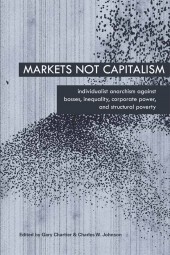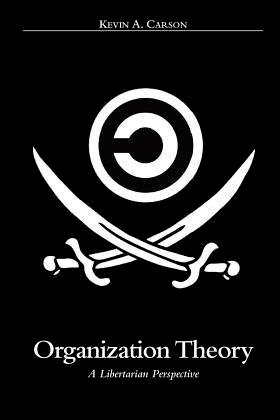Nicholas Hildyard, writing for The Corner House (March 1998), pointed out the phony nature of most of what passes for “privatization” under neoliberalism:
While the privatisation of state industries and assets has certainly cut down the direct involvement of the state in the production and distribution of many goods and services, the process has been accompanied by new state regulations, subsidies and institutions aimed at introducing and entrenching a “favourable environment” for the newly-privatised industries.
Director Sean Gabb of the Libertarian Alliance made a similar point about the kind of “privatization” promoted by vulgar libertarian think tanks like the Adam Smith Institute. The ASI, he wrote in Free Life Commentary (July 3, 1998), “sells market solutions to statist problems.”
An Adam Smith Institute report… will look at the technical questions of how to privatise – at what the shape of the new private activity ought to be, at what special interests need to be conciliated, and so forth. And the report will often only sketch out the details of a proposal that will be fully explained in direct consultancy with a company or ministry….
The old statism was at least mitigated by incompetence. The people in charge of it were paid too little to feel really important; and much of their energy was absorbed in disputes with stupid or malevolent union leaders. They presided over a system that was never very strong, and that failed to weather the storms of the 1970s.
As reconstructed in the 1980s – partly by the Adam Smith Institute – the new statism is different. It looks like private enterprise. It makes a profit. Those in charge of it are paid vast salaries, and smugly believe they are worth every penny….
But for all its external appearance, the reality is statism. And because it makes a profit, it is more stable than the old. It is also more pervasive. Look at these privatised companies, with their boards full of retired politicians, their cosy relationships with the regulators, their quick and easy ways to get whatever privileges they want….
As with National Socialism in Germany, the new statism is leading to the abolition of the distinction between public and private. Security companies, for example, are being awarded contracts to ferry defendants between prison and court, and in some cases to build and operate prisons. This has been sold to us on the – perfectly correct – grounds that it ensures better value for money. But it also involves grants of state powers of coercion to private organisations. All over the country, private companies are being given powers of surveillance and control greater than the Police used to possess.
….There has been no diminution in the economic power of the State, only a change in its mode of operation….
With all that by way of preface, you can imagine my reaction when I came across a paper, titled “Against the mainstream: Nazi privatization in 1930s Germany,” by Germà Bel of the University of Barcelona. Here’s an excerpt:
The Great Depression spurred State ownership in Western capitalist countries. Germany was no exception; the last governments of the Weimar Republic took over firms in diverse sectors. Later, the Nazi regime transferred public ownership and public services to the private sector. In doing so, they went against the mainstream trends in the Western capitalist countries, none of which systematically reprivatized firms during the 1930s. Privatization in Nazi Germany was also unique in transferring to private hands the delivery of public services previously provided by government.
Bel argues that one of the political aims of the privatization initiatives was to win the support of the German industrialists–or as Sidney Merlin put it in a 1943 paper quoted by Bel, “facilitate the accumulation of private fortunes and industrial empires by [the regime’s] foremost members and collaborators.”
Along the same lines, Joseph Stromberg once argued by private email, based on his reading of Behemoth (by the Frankfurt School’s Franz Neumann), that the autarky of Fortress Europe wasn’t the Nazis’ goal at all. It was simply
a temporary way around the Anglo-American ownership of the monetary system, etc. As they conquered territory, the Nazis extended their model of state-capitalism into the new areas. I suppose we could credit them with an early model of top-down globalization…. Not much different than the American model: tariffs until you control the overseas assets, then ‘free trade.’
Had the Axis won, they’d no doubt have created their own version of the Bretton Woods agencies and the UN Security Council, and made the Deutschmark into a global reserve currency.
Neumann and the rest of the Frankfurt School described, as the aim of fascism, to transcend the internal contradictions of capitalism, in much the same way that Immanuel Wallerstein argued the feudal ruling class transcended the internal contradictions of feudalism. According to Wallerstein, a subgroup of the feudal ruling class reconfigured themselves as agrarian capitalists, and negotiated the transition to capitalism, setting themselves up as the core of the new ruling class over a new social system. Similarly, Wallerstein speculates, a section of the capitalist ruling class may attempt to survive the collapse of corporate capitalism from its internal contradictions, by setting themselves up as the ruling class of a post-market collectivist society. That’s exactly what fascism attempted to do, according to the Frankfurt School: to create a post-capitalist, or at least post-market, society under the control of the biggest finance capitalists. The capitalists, in the Frankfurt School scenario, attempt to transcend the law of value and mediate an increasing share of economic transactions directly through the state rather than the market price system.
Perhaps not coincidentally, the tendency of neoliberal capitalism over the past few decades, despite all the “free market” rhetoric, has been to socialize an ever-increasing share of the operating costs of business, and to insulate big business increasingly from market competition through a draconian “intellectual property” (sic) regime. Besides the war economy and the military-industrial complex, the internal security state and the prison-industrial complex have grown by leaps and bounds. Consider the irony of Dick Cheney, of Halliburton fame, pontificating that “the government never made anybody rich.” We have been evolving, in recent decades, to a system of power in which the bondaries between the corporation and the state are increasingly a legal fiction, and the corporate capitalists administer the economy from their position at the helm of the state.
The main difference between what the Nazis aimed at, and the neoliberal policies pursued in the Anglosphere, is that “free market” rhetoric serves a useful legitimizing function for selling the latter. The Germans, who pursued a similar (if more extreme) model of corporate welfare statism and crony capitalism, were relieved–thanks to a different political culture–of the necessity of disguising their corporatism.
Kevin A. Carson
free.market.anticapitalist@gmail.com







